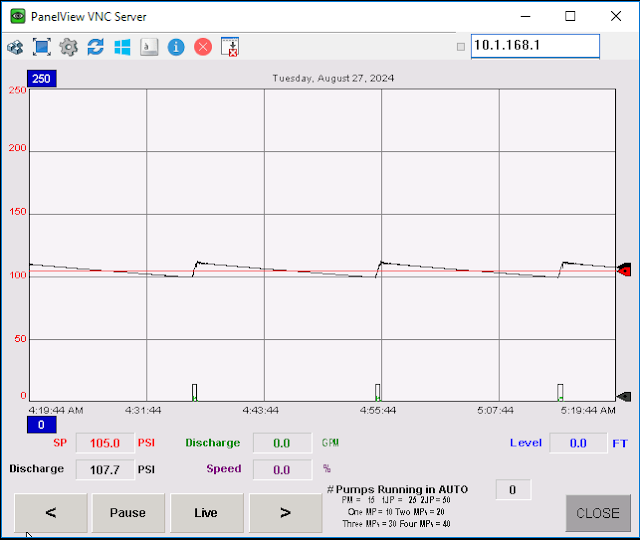It may sound unusual, but it was great to have an irrigation break, and repair this past week. Why in the world would we want to have to deal with a break in August? Well, for quite some time, we have seen the pump station's small pressure maintenance pump cycling about four times per hour. This meant that the system was losing one gallon of water per minute somewhere...
It should be noted that by most standards this really isn't a whole lot of water. For perspective, municipal water systems, which provide our drinking water, often have leaks accounting for over 20% of the potable water supply they are pumping.
 |
| Pump cycling four times per hour. |
While a gallon of pond water may not sound like much, we still wanted to know where it was going. After all, small leaks can turn into big leaks. The location of water loss was finally found in the back corner of the property behind #4 green. With a large storm drain inlet just a few feet away, the water wasn't creating a puddle, or stream of any kind.
The repair was straightforward, simply requiring us to cut out a cracked 2" elbow and replace it.
You could say that the pump station is now "flat lining," which is great in this situation. Below, you can see that the black line (indicating the current discharge pressure) is virtually unchanged for a full hour, and hovering right above the red line (the system set pressure).

Other than a lightning strike, this is the first break we have had in two years. The total spent in irrigation parts to make these repairs was $30--not bad for a 35 year old system!











